Give That Coffee Table an Extra Shot of Style
http://decor-ideas.org 08/20/2014 20:15 Decor Ideas
I’m always looking for easy, budget-friendly ways to update my decor. Spaces can become stagnant if we don’t tweak them every so often. And my living room is certainly stagnating these days. I’ve had the same amber glass candlesticks and stack of books on my coffee table (inherited from my mother-in-law) for ages. Recently, I decided that it was time for a change. First, I focused on my coffee table.

After a bit of research, I found a solution that surprised me in its simplicity yet intrigued me with its range of possibilities: trays. A lovely tray filled with the right pieces immediately enhances a room. Trays have a practical side too. They meet a variety of functional needs, from entertaining with ease to storage. They also offer flexibility. Creating your tablescape on a tray will also allow you to quickly move it out of the way when you need more tabletop space. If this sounds good to you, here’s what you’ll want to consider.
Choosing a Tray
Your first step is to select the perfect tray. The shape, size and style options are almost limitless. Whether you’re purchasing a new one or rummaging through your cabinets, it helps to consider the function and size requirements up front and then pick your style and design approach.
Function. For designer Erika Bonnell, who often incorporates trays into her tablescapes, as she’s done here, function is key. “I most often use trays out of what I feel is necessity,” she says. “I think of function first, always.” When selecting a tray, think about the items you want it to hold and allow plenty of surface space on the tray. “I like to give myself room to fit a medium-size vase, glasses or coffee mugs, a box or dish, and possibly candlesticks,” she says.
Consider the table’s dimensions, too. A small tray on a large table can look skimpy. “Select a tray that proportionally fits well on the table,” says Bonnell.
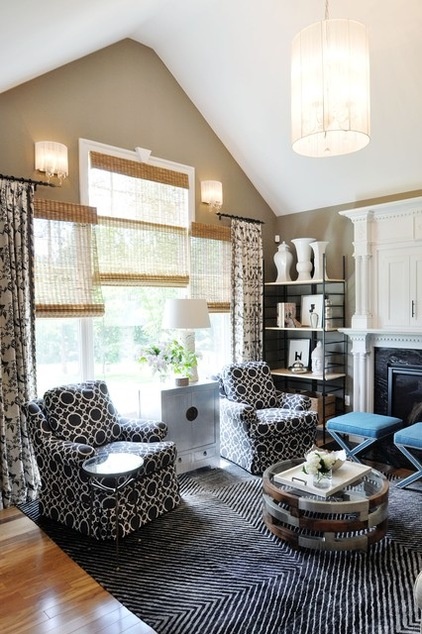
On a glass or mirrored coffee table, trays play a particularly important role. “These surfaces tend to be a bit high maintenance,” Bonnell says. “They show every little smudge, fingerprint or drink ring. Trays offer a more forgiving surface. They definitely help reduce the amount of Windex used in a day. Also, I like to anchor mirrored and glass tables with the visual weight that a tray provides.”
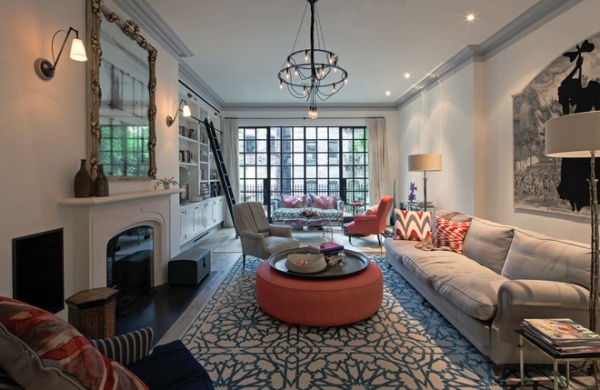
An ottoman is a livable, family-friendly choice in front of a sofa, especially when topped with a tray. This oversize round tray, which covers the entire surface of this ottoman, functions more as a tabletop than an accessory and offers plenty of space for food and drinks as well as display items. But a round tray isn’t your only option on a round ottoman or table. A rectangular tray would work too, as Bonnell showed in the previous example. It’s all a matter of preference.
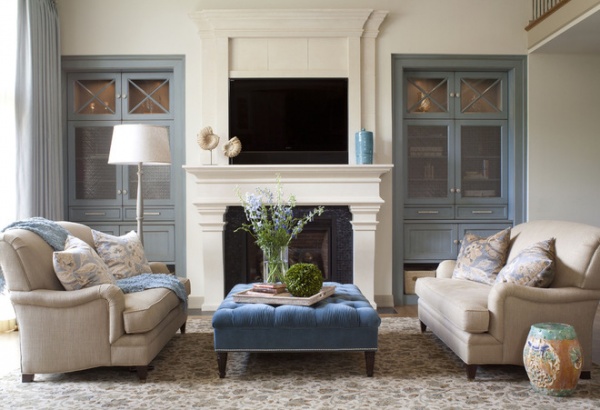
The smaller tray here doesn’t cover up too much of this elegant ottoman’s velvet tufting, and it provides a flat surface for a vase of flowers, with room to spare for a few books and a greenery sphere. I love the pop of organic green in this room’s subdued palette.
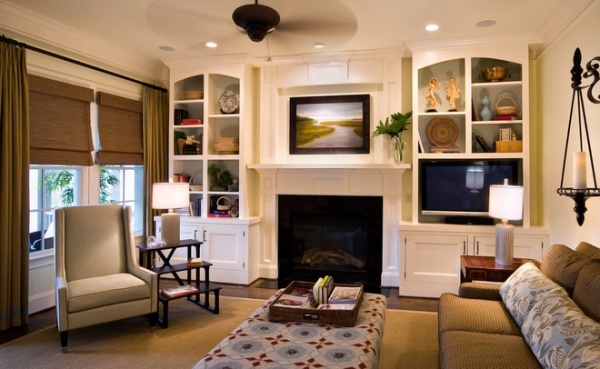
This coffee table tray is all business. Tame those teetering stacks of magazines and books with a large tray like this one. Organize playing cards, coasters, cocktail napkins and remote controls — all the usual coffee table detritus — in a tray for a clean, uncluttered look.
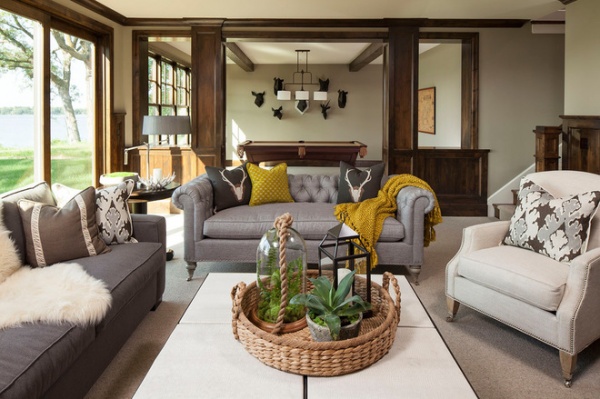
Style. Once you’ve determined your functional needs and a general size, it’s time to get down to style specifics. What look are you after — rustic, beachy, sophisticated? Is the tray going to play a starring or supporting role in the arrangement?
The tray itself is an important element in the finished look, says Tracie West Irving of Martha O’Hara Interiors. “A tray serves as a great foundation piece that creates the initial layer of texture and depth to build your tablescape upon,” she says. This durable one is a great earthy, woven base for plants and a lantern. Large handles allows it to be easily moved out of the way when needed. ANd using a round tray on a rectangular table creates interest. “It is fun to mix it up as long as the tray doesn’t overpower the furniture piece,” West Irving says.
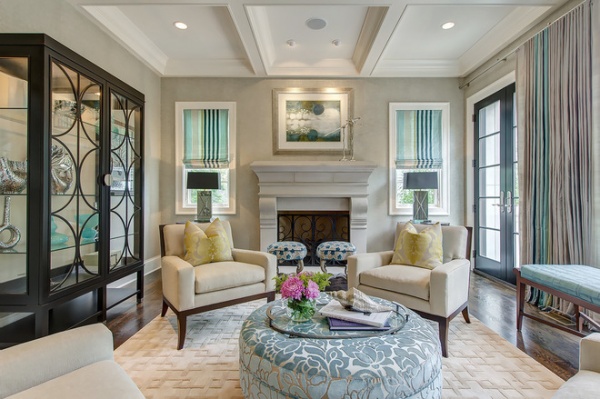
Here a glass and metal tray quietly recedes and lets the other elements take center stage. This transparent option allows the gorgeous cut-velvet fabric to show through, while graceful handles and ball feet make it special. Shocking pink flowers add vibrant color, and a lustrous faux shell adds a bit of bling to the sophisticated scene.
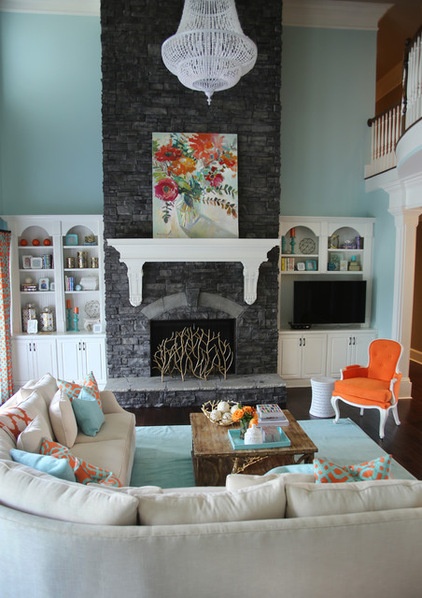
A different approach was taken with this coffee table. The turquoise tray provides another small dose of lively color in an exuberant space, adding another layer of the hue used throughout the room.
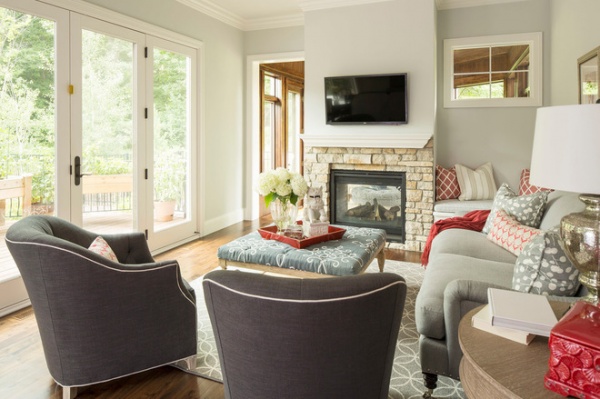
A bold-hued tray is a great way to add a little color to a neutral space too. This red tray picks up on the space’s other bold accents. The angled placement of the tray on the ottoman lends a casual, unstudied air. If this room were more about symmetry, then it would probably have been sense to line up the edges with the ottoman.
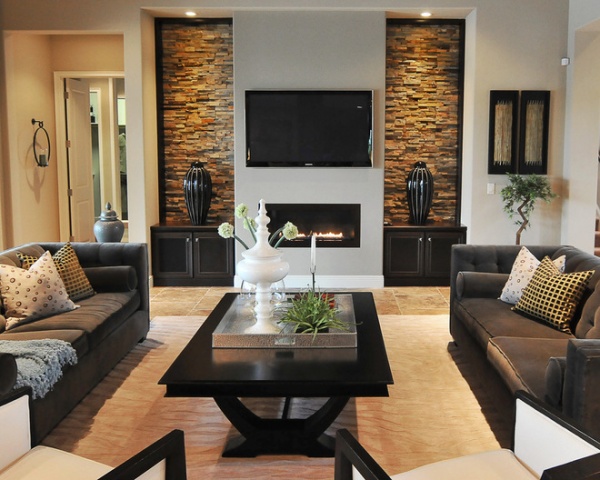
Approaches to Tablescape Design
There are two basic approaches to building a tablescape with a tray. One is to contain all the elements within the tray, as shown here; the tray unites the elements and gives the arrangement structure. This tray, although large enough to contain the other elements, leaves plenty of room for resting a coffee cup or wineglass on either end of the table. (Because this room is about symmetry — note how the vases, sofas and chairs all mirror one another — the perfectly positioned tray makes sense.)
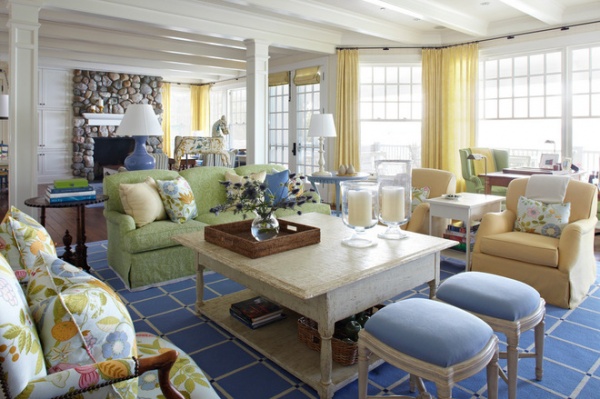
The other approach is to include a tray-based arrangement in a larger tablescape design. This approach works well on larger tables where a tray can anchor one side or end. This table’s grand proportions easily accommodate the tray on one side and the hurricane candleholders on the other. The tray sets off a pretty vase of flowers and eliminates the possibility of a water ring on the wood table.
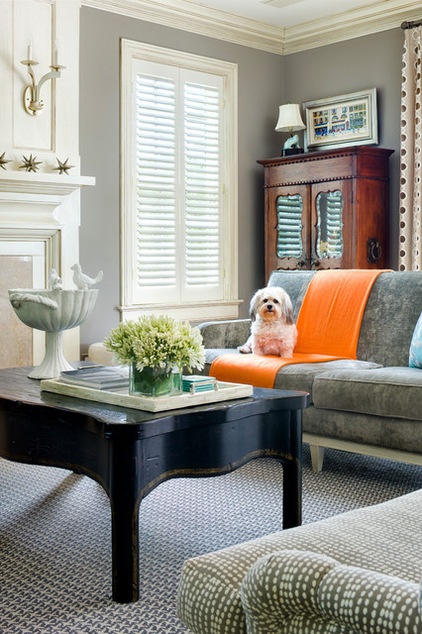
Building a Tray-Based Tableau
Now that you have your tray in place and have settled on a tablescape design approach, it’s time to fill your tray with items you love or want to have close at hand. “I love adding a vase of flowers alongside a book or two or a stack of books, with a fun accessory to accent it on top,” says West Irving. “There are really no rules as to what you can place in them, just as long as the balance is there.”
Consider items that bring a drop of color to your room or ones that add texture.
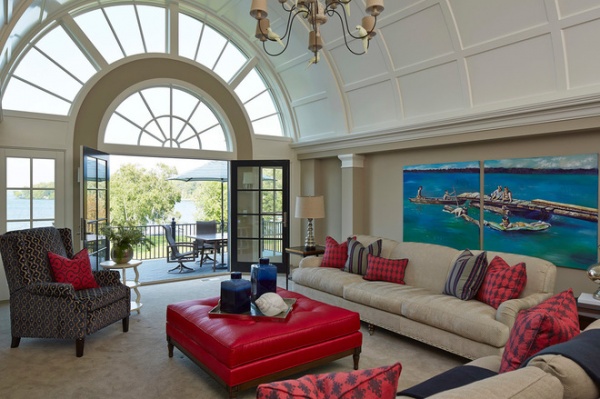
This tablescape certainly adds a colorful zing to a grand space. The room’s size can tolerate the chunkier elements in this arrangement, although West Irving cautions against overwhelming the tray or the furniture piece it sits on. As in all design, scale, proportion and balance come into play when you’re arranging items on a tray. The height of the items is important too, says West Irving, so guests don’t have to talk over your coffee table arrangement. Grouping three elements together is an almost no-fail formula for success.
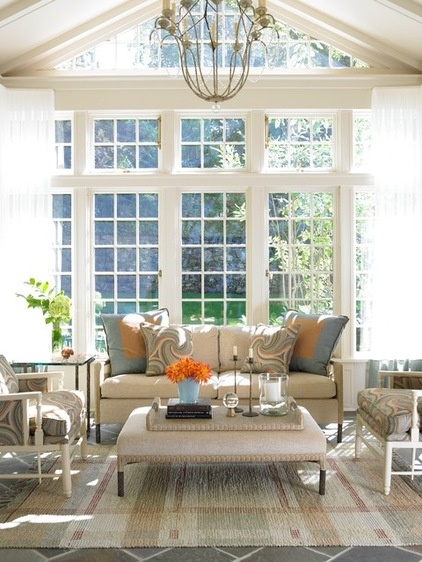
I love how the orange flowers in a blue vase adds color to this otherwise neutral space. Another trick to creating appealing tablescapes is to vary the height of the elements, which this tableau illustrates perfectly. By placing an item, such as this vase, on a stack of books, you can play with the height. The thin candlesticks add additional height, without adding bulk. And the glass accents keep the look light too. Displays and groupings are generally more pleasing to the eye with an odd number of elements (seven were used here).
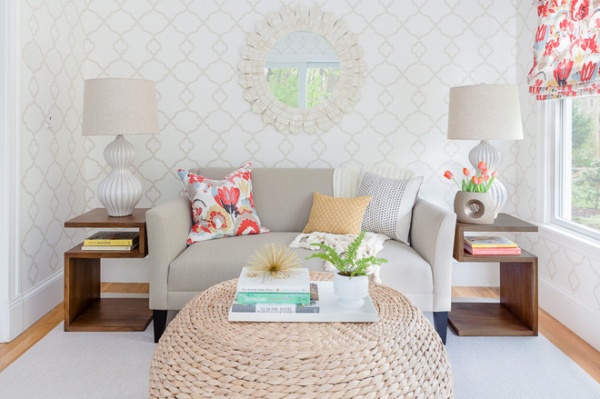
An arrangement of fresh flowers is a luxury most of us only splurge on when entertaining guests. The rest of the time, a potted plant makes a budget-friendly, longer-lasting substitute. And see how the book spines add another layer of color here? Meanwhile, the gold sea urchin lends a little metallic sheen. It’s all subtle, but there’s a lot going on here that makes this tableau complete the room.
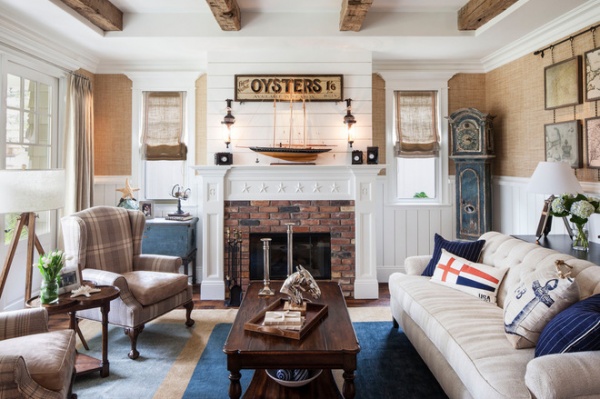
In this beach chic living room, a mounted horse-head figure and tall candlesticks add metallic interest to the tablescape. There’s an interesting mix of materials and textures on the rustic table: the weathered tray, vintage books and metallic elements. And the starfish is the perfect finishing touch.
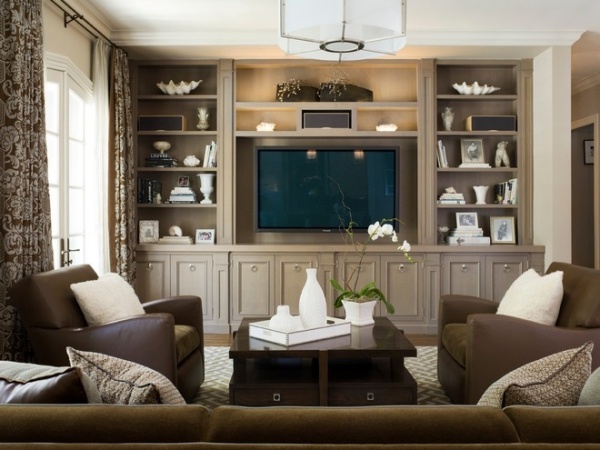
White accessories make a statement against dark elements in this tailored space. An all-white arrangement is always dramatic. The shapely vases and graceful orchid soften the look but keep the monochromatic appeal.
More:
Eye-Catching Centerpieces Beyond Flowers and Fruit
Browse trays in the Products section
Related Articles Recommended












